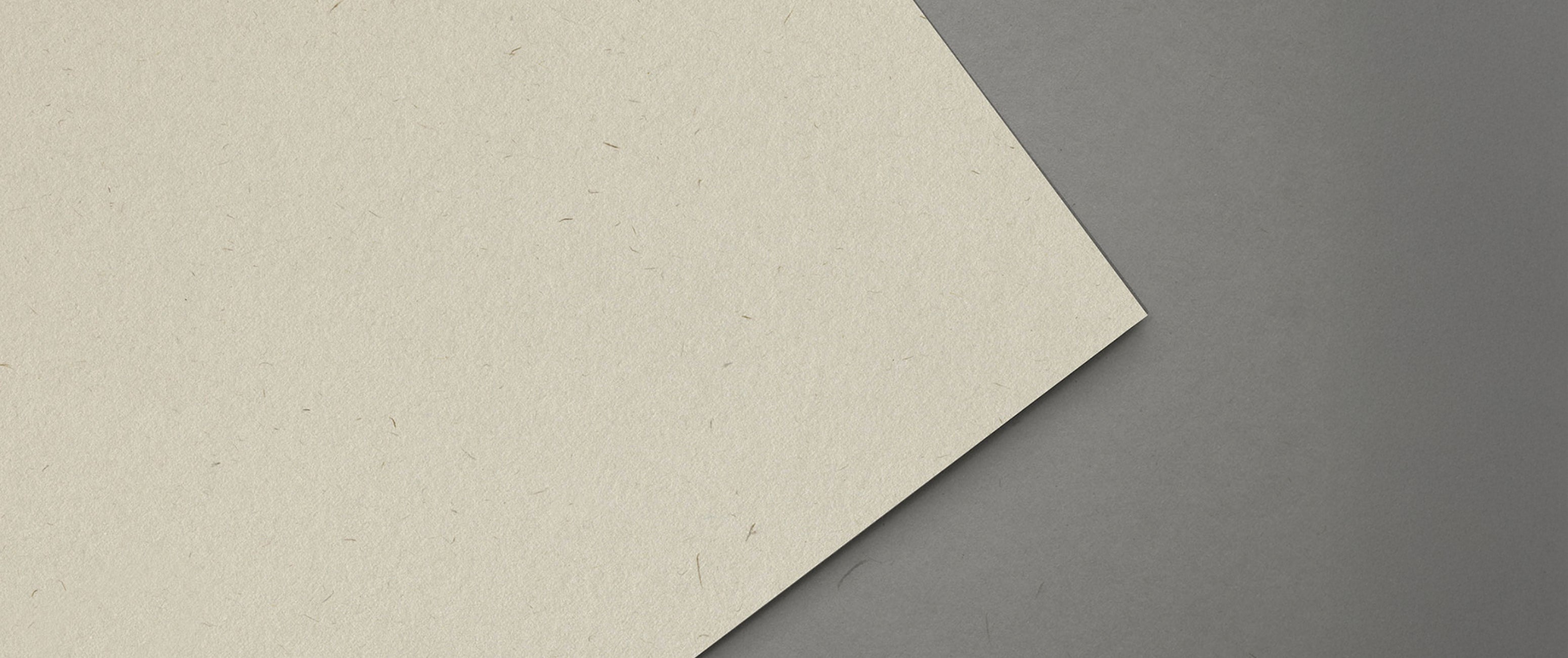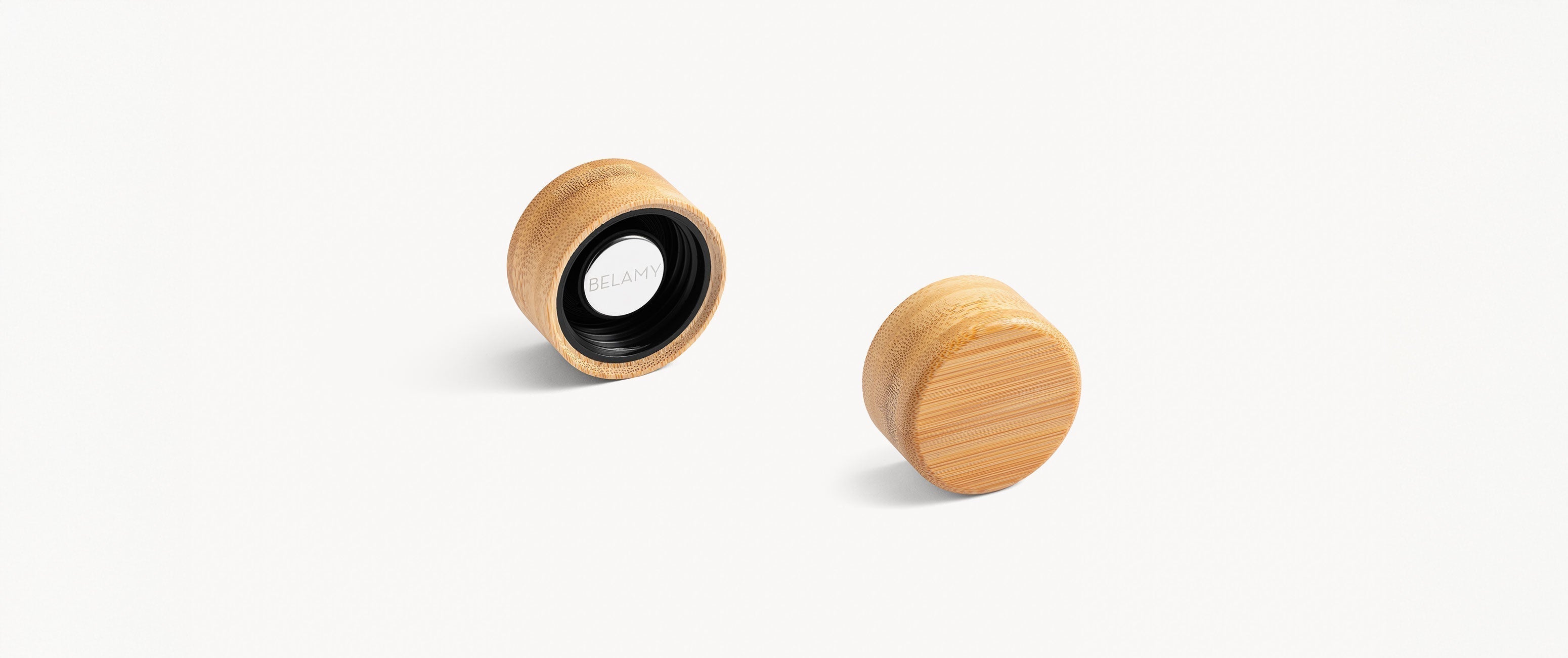Article: Grass paper - Innovation made in Germany

Grass paper - Innovation made in Germany
Sustainability x Design III: We develop products that impress with their sustainability, design, and quality. To achieve this, we rely on selected materials, which we will present and explain in more detail in a series of blog posts.
The third part of our short series is about the packaging of the BELAMY bottle: our carton made of grass paper. Below, we'll explain what it is and why we at BELAMY also find grass paper so special and sustainable.
In short
Grass paper replaces a significant portion of the virgin fiber pulp, which is normally obtained from wood, with grass fibers. This results in a comparatively excellent environmental footprint, as fewer raw materials and energy are required than with conventional paper. Wood consumption is significantly reduced, and valuable forests are protected from deforestation. Short transport routes reduce CO2 emissions throughout the entire production cycle. Only the widespread and year-round availability of regionally produced grass paper currently remains a minor hurdle.
What is grass paper and why is grass suitable for paper production?
Grass paper is a pulp-based product in which a significant proportion (at least 30%) consists of grass fibers. Similar to wood, grass also consists of cellulose fibers, which are needed for paper production. Grass has the advantage of growing significantly faster than trees and can be harvested several times a year. Depending on the final product, up to 50% of the virgin wood pulp can be replaced with grass fibers, ultimately saving large areas of forest from deforestation – without compromising quality, functionality, or appearance.

Less is sometimes more - how sustainable is grass paper?
Let's start with the bare numbers: Compared to traditional paper production from wood (or virgin fiber pulp), the extraction of fibers for grass paper produces 95% less CO2, consumes 97% less energy, and uses 99% less water. Unbelievable? But true! And as if that weren't good enough, the use of environmentally harmful chemicals is completely eliminated! The decisive factor is the combination of easily processed grass fibers and recycled waste paper in the production of grass paper. Another major advantage is the origin of the raw materials and the associated savings in transport and logistics. More on the individual aspects below.
Missing in grass and that's a good thing: Lignin - the glue of wood
The fact that grass is so much easier and more environmentally friendly to process into fibers and paper is due to the lower amount of lignins. These lignins are solid biopolymers that are stored in the cell walls of plants and, as they accumulate, lead to the lignification of the cells. While they give wood its strength and stability, they must first be removed to make the pulp usable for further processing. This requires a great deal of water and chemicals. Grass contains only a very small amount of lignin and therefore does not require these complex processes. This is how the savings listed above come about.
Local raw materials protect the environment
Grass grows virtually everywhere, and waste paper is generated in almost every household every day. The fields and meadows from which the grass for grass paper production comes are usually located within a few kilometers of the processing plants. In contrast, the wood used in traditional paper production travels an average of 4,000 kilometers before it can even be processed in Germany. Grass, on the other hand, is easy to grow.
Compensation areas, such as those adjacent to highways or surplus agricultural land where grass is popular for cultivation due to its low maintenance, are often used for this purpose. Furthermore, farmers in the EU will be required to create additional compensatory areas for their land use starting in 2023. This makes it ideal for the creation of green meadows. These are usually mown twice a year. While the first harvest is still high in protein and can therefore be used for livestock, the second harvest is too high in fiber for animal feed but is ideal for grass paper production.

A box made entirely of grass?
Pure, grass-based paper does not yet exist. Grass paper production cannot yet be entirely achieved without wood, but research into advanced solutions and production processes is well underway. The use of environmentally friendly grass fibers in the papermaking process can already reduce the need for virgin pulp by up to 50 percent. The remaining portion is recycled paper. The use of grass in papermaking could save 9 out of 10 trees worldwide from deforestation.
Since each manufacturer has its own "recipe," grass paper and packaging can be produced in a wide variety of forms. The color of the paper depends on the harvest time and the proportion of grass fibers in the product. As a result, the product packaging is not always uniform, but the quality and stability are equivalent to conventional packaging.
The content counts
At BELAMY, we chose to use grass paper in our packaging to clearly emphasize the sustainability of our products in every aspect. The grass fiber content also gives the folding boxes a beautiful, completely natural color. And let's be honest: Even the most beautiful packaging ends up in the trash at some point. You can simply dispose of ours in the waste paper bin and thus contribute to the recycling cycle (this can be done up to 25 times with paper, by the way).
